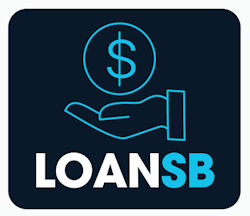Equipment Financing: Pros and Cons

Equipment financing is a popular option for businesses looking to acquire essential machinery and technology without the hefty upfront costs. By spreading payments over time, this financing method helps preserve cash flow and allows businesses to stay current with the latest advancements. However, like any financial decision, it comes with its own set of advantages and disadvantages. In this article, we will explore the key pros and cons of equipment financing to help you determine if it’s the right choice for your business.
Pros of Equipment Financing:
- Preserves Cash Flow
- Equipment financing allows businesses to acquire necessary equipment without a significant upfront cash outlay. This preserves cash flow for other critical operations and investments.
- Access to Up-to-Date Equipment
- Financing enables businesses to access the latest technology and equipment. Staying current with advancements can improve efficiency and competitiveness.
- Tax Benefits
- Many equipment financing options offer tax advantages, such as the ability to deduct interest payments or depreciate the equipment. These benefits can reduce the overall cost of financing.
- Fixed Payments
- Equipment financing often comes with fixed monthly payments, making it easier to budget and plan for the future. This predictability helps businesses manage their finances more effectively.
- Retain Ownership
- Unlike leasing, equipment financing typically results in ownership of the equipment once the loan is paid off. This allows businesses to build equity in their assets over time.
- Improved Cash Flow Management
- By spreading the cost of the equipment over time, businesses can better manage their cash flow, ensuring they have sufficient funds for other expenses and investments.
- Flexible Financing Options
- Equipment financing offers a variety of terms and structures, allowing businesses to choose a plan that best fits their financial situation and operational needs.
- No Collateral Required
- In many cases, the equipment itself serves as collateral for the loan, which means businesses don’t need to pledge additional assets to secure financing.
- Quick Approval Process
- Equipment financing often has a faster approval process compared to traditional loans, enabling businesses to acquire necessary equipment quickly and avoid disruptions in operations.
- Maintain Competitive Edge
- Financing equipment ensures that businesses can invest in high-quality, efficient machinery that enhances productivity and keeps them competitive in their industry.
Cons of Equipment Financing:
- Interest Costs
- One of the main drawbacks of equipment financing is the interest that accrues over the loan term. This increases the total cost of the equipment compared to purchasing it outright.
- Depreciation of Equipment
- Equipment typically depreciates over time, which means that the value of the asset decreases as you continue to make payments. This can result in the business paying more than the equipment’s worth over the loan period.
- Long-Term Financial Commitment
- Financing equipment usually involves a long-term financial commitment. If the business’s financial situation changes, it may become challenging to keep up with the monthly payments.
- Potential for Higher Payments
- Depending on the interest rate and loan terms, monthly payments for equipment financing can sometimes be higher than expected, impacting the business’s cash flow and budget.
- Restrictions and Penalties
- Equipment financing agreements often come with specific restrictions and penalties for early repayment or non-compliance with the terms. This can limit the business’s flexibility in managing its finances and equipment.
- Maintenance and Repair Costs
- Once the equipment is acquired, the business is responsible for all maintenance and repair costs. These additional expenses can add up over time and impact the overall cost-effectiveness of financing.
- Asset Obsolescence
- Rapid technological advancements can render equipment obsolete before the financing term ends. Businesses might still be paying for equipment that is no longer the most efficient or effective option available.
- Credit Impact
- Taking on equipment financing adds to the business’s debt load, which can affect its credit rating. This could make it more challenging to secure additional financing in the future.
- Limited Upgrades
- Unlike leasing, where businesses can often upgrade to newer equipment at the end of the lease term, equipment financing typically doesn’t offer such flexibility. Businesses may need to secure new financing to upgrade outdated equipment.
- Complex Application Process
- Although approval can be quick, the application process for equipment financing can be complex, requiring detailed financial documentation and sometimes a thorough assessment of the business’s financial health.
Equipment financing offers numerous benefits, such as preserving cash flow, providing access to the latest equipment, and offering potential tax advantages. However, it’s crucial to weigh these advantages against the potential downsides, including interest costs, long-term commitments, and the risk of equipment obsolescence. By carefully considering these factors, businesses can make an informed decision that aligns with their financial goals and operational needs. Ultimately, understanding the pros and cons of equipment financing will empower you to choose the best financing strategy for your business’s success.

Please contact us if you have any feedback or questions.


